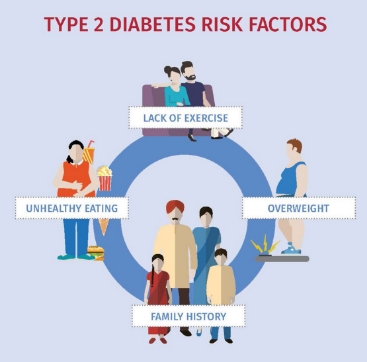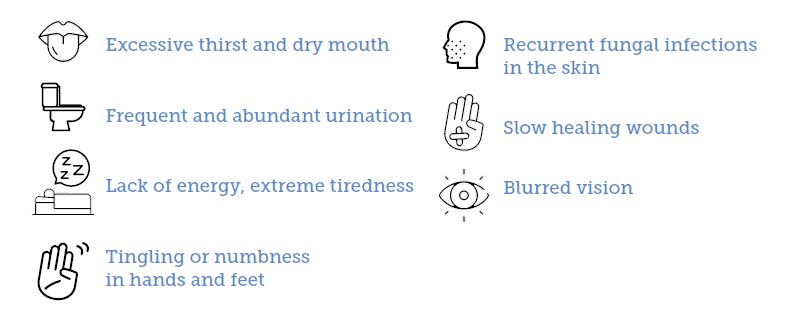- About Diabetes
- Premium Courses
- Free Courses
- Resource library
- GHU Training
- Login
- Register
Type 2 diabetes is the most common type of diabetes, accounting for around 90% of all diabetes cases.
It is generally characterized by insulin resistance, where the body does not fully respond to insulin. Because insulin cannot work properly, blood glucose levels keep rising, releasing more insulin. For some people with type 2 diabetes this can eventually exhaust the pancreas, resulting in the body producing less and less insulin, causing even higher blood sugar levels (hyperglycaemia).
Type 2 diabetes is most commonly diagnosed in older adults, but is increasingly seen in children, adolescents and younger adults due to rising levels of obesity, physical inactivity and poor diet
The cornerstone of type 2 diabetes management is a healthy diet, increased physical activity and maintaining a healthy body weight. Oral medication and insulin are also frequently prescribed to help control blood glucose levels.
Several risk factors have been associated with type 2 diabetes and include:
*Impaired glucose tolerance (IGT) is a category of higher than normal blood glucose,but below the threshold for diagnosing diabetes.

Changes in diet and physical activity related to rapid development and urbanisation have led to sharp increases in the numbers of people living with type 2 diabetes.
The symptoms of type 2 diabetes are similar to those of type 1 diabetes and include:

These symptoms can be mild or absent and so people with type 2 diabetes may live several years with the condition before being diagnosed.
The cornerstone of managing type 2 diabetes is a healthy lifestyle, which includes a healthy diet, regular physical activity, not smoking, and maintaining a healthy body weight.
Over time, a healthy lifestyle may not be enough to keep blood glucose levels under control and people with type 2 diabetes may need to take oral medication. If treatment with a single medication is not sufficient, combination therapy options may be prescribed
When oral medication is not sufficient to control blood glucose levels, people with type 2 diabetes may require insulin injections
There are a number of factors that influence the development of type 2 diabetes. The most influential are lifestyle behaviours commonly associated with urbanisation. Research indicates that a majority of cases of type 2 diabetes could be prevented through healthy diet and regular physical activity. A healthy diet includes reducing the amount of calories if you are overweight, replacing saturated fats (eg. cream, cheese, butter) with unsaturated fats (eg. avocado, nuts, olive and vegetable oils), eating dietary fibre (eg. fruit, vegetables, whole grains), and avoiding tobacco use, excessive alcohol and added sugar.
Regular physical activity is essential to help keep blood glucose levels under control. It is most effective when it includes a combination of both aerobic (eg. jogging, swimming, cycling) exercise and resistance training, as well as reducing the amount of time spent being inactive.
Brief questionnaires are simple, practical and inexpensive ways to quickly identify people who may be at a higher risk of type 2 diabetes and who need to have their level of risk further investigated.
The Finnish Type 2 Diabetes Risk Assessment Form, developed in 2001, is an example of an effective questionnaire that can be used as the basis for developing national questionnaires which take into account local factors. It has eight scored questions, with the total test score providing a measure of the probability of developing type 2 diabetes over the following 10 years. The reverse of the form contains brief advice on what the respondent can do to lower their risk of developing the disease, and whether they should seek advice or have a clinical examination. The test takes only a couple of minutes to complete and can be done online, in pharmacies or at various public campaign events.

IDF has developed a type 2 diabetes online diabetes risk assessment that aims to predict an individual’s risk of developing type 2 diabetes within the next ten years. The test is based on the Finnish Diabetes Risk Score (FINDRISC) developed and designed by Adj. Prof Jaana Lindstrom and Prof. Jaakko Tuomilehto from the National Institute for Health and Welfare, Helsinki, Finland.